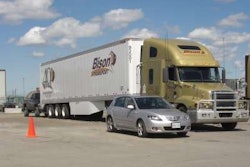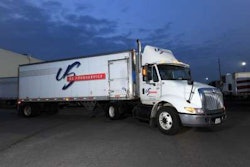Carriers today must scrutinize customers like never before
When a downturn in the economy squeezes margins, trucking companies typically respond by discounting rates to increase load volumes, reducing variable costs by taking out capacity, and improving their operating efficiencies. When the economy rebounds, they use the capacity they already have to grow.
Those principles may be tried and true, but this time the game has changed. Now and in the future, companies have to pay much closer attention to the profitability of customers, says Robert Sullivan, president of Effective Management Systems.
Sullivan recommends that carriers focus on contribution dollars (revenue minus variable cost) per customer. In years past, fleets could increase their overall contribution dollars through revenue growth and efficiencies. This time they will have to surgically remove unprofitable customers and the variable costs that go with them.
Sullivan reached this conclusion after analyzing one client’s less-than-truckload operations. “I went in with the predetermined notion that all we would need to do is improve operating efficiencies, and all would be well,” he says. “I got the surprise of my entire career.” His analysis showed that even at 100 percent efficiency, the company still would be unprofitable, and positive cash flow would be “iffy.”
To identify unprofitable customers, carriers must know their costs – and must cost shipments properly. Some carriers calculate variable cost as a flat hourly or mileage-based rate using data from a profit-and-loss statement. But not all hours or miles are the same; variable cost differs by customer due to factors such as deadhead miles, appointment times, toll costs, freight density and layovers.
Even unprofitable shipments can provide some contribution to overhead and fixed costs. If you remove customers, things may get worse unless you can remove them and improve your contribution margins.
In 1986, Sullivan left a senior management position at an LTL carrier to develop a proprietary costing and cost management software, the Effective Management System (EMS). Sullivan used EMS to analyze the customers of his client, one terminal at a time. Sullivan divided the customers into three groups by their contribution ratio (CRAT), the ratio of revenue to variable cost.
The first group consisted of customers with a CRAT of 1 to 100. This group not only was unprofitable, but also was subtracting contribution dollars away from the other two groups. The second group consisted of unprofitable customers that provided some contribution to overhead. The third group consisted of customers with a CRAT above the carrier’s break-even point of 135.
In Sullivan’s analysis, combining groups one and two resulted in negative revenue and negative contribution dollars per shipment. Carriers assume they are getting contribution from the middle group, but the reality is that the third group is the only group providing contribution. For many carriers, this third group generally represents 60 to 65 percent of total revenue, he says.
After identifying unprofitable customers, the next step is to eliminate the variable costs that go with them. This is complicated because removing a customer affects the operations and costs of multiple terminals.
The EMS system uses engineered standards for the time each shipment should take to pick up and deliver; these work standards consider distance, shipment size, weight and many other factors. Analyzing customers based on work standards, as opposed to actual costs, is a better way to analyze the amount of work each customer represents and to know how much work – and cost – to remove, Sullivan says.
Based on his industry experience, Sullivan believes carriers no longer will be able to operate solely under the “grow revenue, control cost” scenario now or even after the current recession ends. “I believe we have to grow revenue and manage operating efficiencies at a higher level than ever before, but at the same time be able to surgically manage the customer base on an ongoing basis.”












